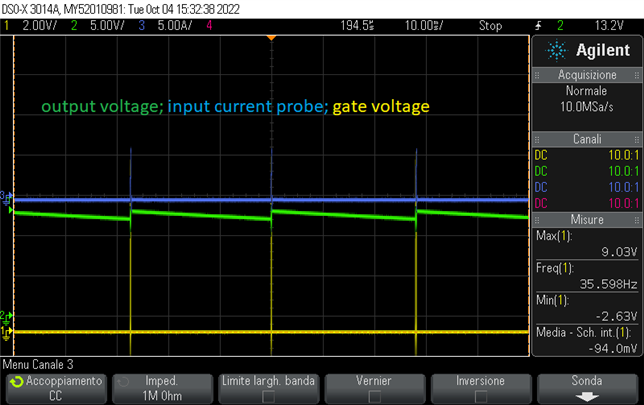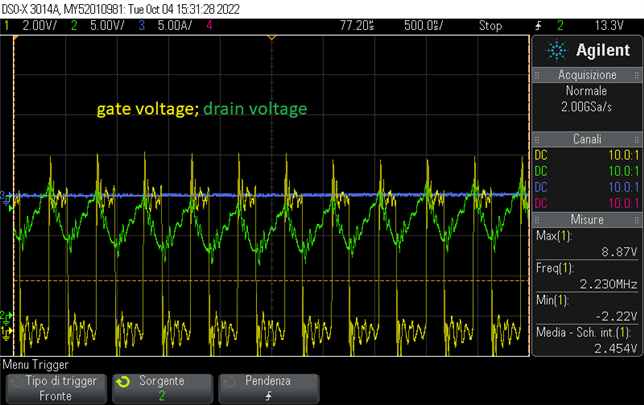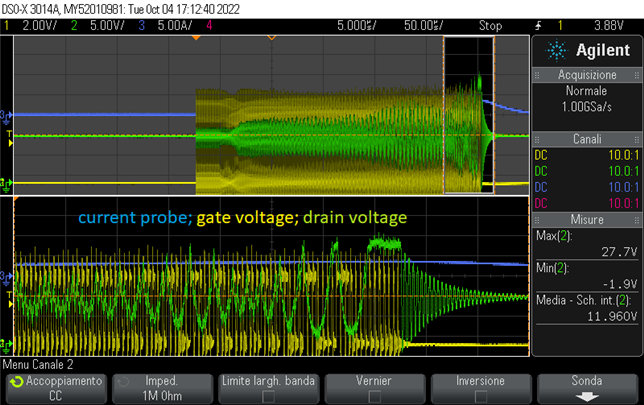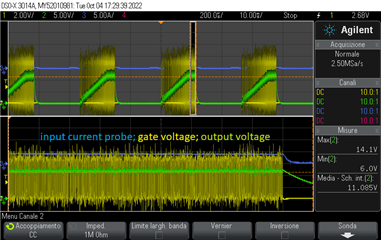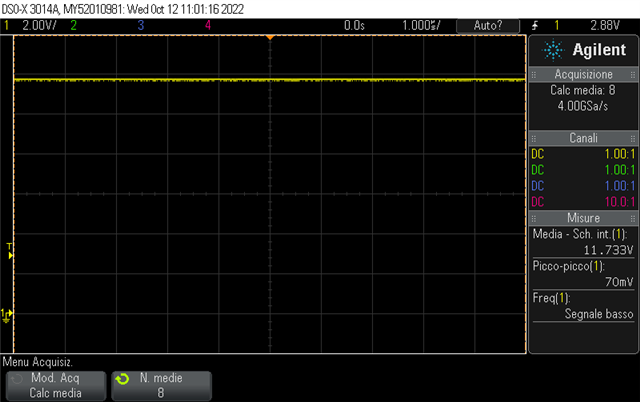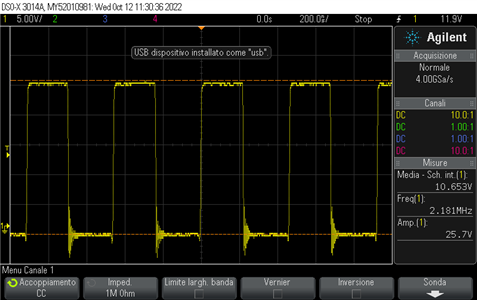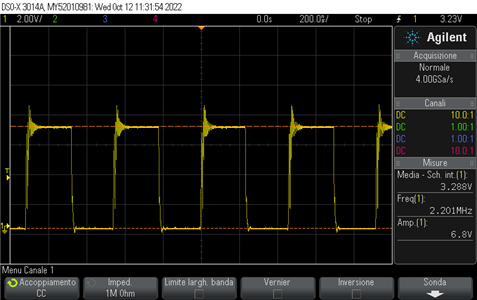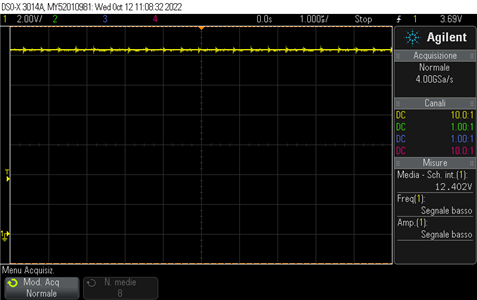Hi team,
In the current design I am trying to use the LM51561-Q1 as a SEPIC controller.
The specifications are:
- Vin range = 7 to 17 V
- Vout = 12 V
- Iout max = 2 A (nominal 0.6 A)
- switching freq = 2.2 MHz
The schematics are the following:
The problem I am having is that when the load (20 Ohm resistor) is connected, the output voltage drops and the bench power supply goes in current limit mode due to the large currents flowing in the MOS.
The steps I am planning to follow to get a working design are:
- Increase coupled inductors values (up to 10 uH)
- Increase input and output capacitances
- Lower the switching frequency
- Add UVLO resistors
- Tune CS pin resistors and SS pin capacitances
I would like to have your feedback about it.
Best regards,
Luca



